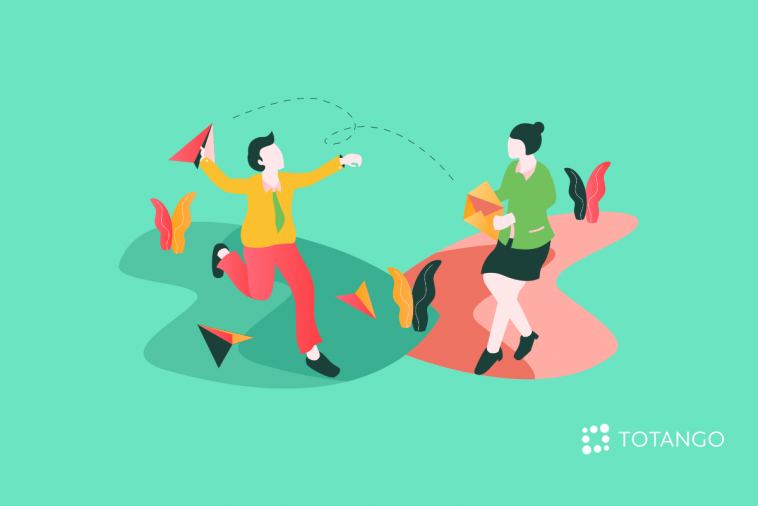- Like
- SHARE
- Digg
- Del
- Tumblr
- VKontakte
- Flattr
- Buffer
- Love This
- Save
- Odnoklassniki
- Meneame
- Blogger
- Amazon
- Yahoo Mail
- Gmail
- AOL
- Newsvine
- HackerNews
- Evernote
- MySpace
- Mail.ru
- Viadeo
- Line
- Comments
- Yummly
- SMS
- Viber
- Telegram
- JOIN
- Skype
- Facebook Messenger
- Kakao
- LiveJournal
- Yammer
- Edgar
- Fintel
- Mix
- Instapaper
- Copy Link
There is an old test that young journalists use to measure the power of their writing. A person who reads your story should be able to retell all the salient news points to a peer hours later, without having to remember any particular word or phrase in order to get the point across.
The idea is that what is important is the message, not the language. What is valuable is the information contained within the story. The same theory applies to good customer success. Your engagements should be driving value, period.
That knowledge gives you the power to settle the low-touch vs. high-touch debate in favor of whichever method better leverages your resources toward generating growth for your customer and yourself.
Low-Touch Vs. High-Touch: What Is the Difference?
The low-touch vs high-touch customer success engagement is often trivialized to a clash between human and automated communication. The distinction is better presented as a choice between one-on-one customer assistance and personalized solutions and the provision of resources a customer can use themselves.
- High-touch: This strategy involves regular, one-on-one assistance from a dedicated Customer Success Manager for whom this might be their only account (but is more likely one of a handful of accounts). It is usually used for strategic or high-value customers that are often more complex and require one-on-one assistance.
- Low-touch: Also called tech-touch, this strategy involves digital engagement and the use of non-designated customer success associates as needed. It is frequently used for volume customers that generally have a low recurring revenue and/or uncomplicated rollout.
Both approaches make use of the judgment, vigilance, and creativity of customer success (CS) team members. Both approaches also rely on the data collection, analysis, and solutions provided by CS software in their preparation, and digital engagement is used in both cases as well. The end goal in each instance is to deliver value to customers by helping them use your product to achieve their business goals.
Help High-Touch and Low-Touch Customers Reach their Goals
The most important factor in any CS effort is that your communications are data-driven. Messaging that is relevant to the customer’s current situation, their unique goals, and their product progress will bring value. Once your CS team understands this, they should also realize that low-touch vs. high-touch is not the right way to see the question. Both approaches can benefit from digital engagement that is relevant and timely.
There is also a misconception that digital engagement has a robotic feel. Yet, just because a communication is automated, that doesn’t mean it has to feel produced by a machine. The key is to ensure that tech-touch communications are relevant to those they are being sent to and that there is a balance between personalized messages that appear to come from a CSM and those from your company’s brand.
How High-Touch Works
High-touch CS offers a personal guide for the customer. The CS manager becomes a highly visual part of the customer experience and an integral part of product deployment beyond the initial period of onboarding. Such an effort will take up a greater amount of a CS employee’s resources than a low-touch/tech-touch model. However, a high-touch engagement does not mean the absence of digital engagement. Digital engagement is valuable for both high-touch and tech-touch approaches, though high-touch digital engagements will more often be personalized for the customer.
Example: High-Touch New Feature Announcement
As we mentioned above, a high-touch model can benefit from digital engagement just as much as a tech-touch model can. For a new feature announcement, high-touch customers might get a digital engagement, just like tech-touch customers do, but training on that feature might involve a personalized training session that focuses on needs and issues specifically relevant to that customer.
How Low-Touch Works
Low-touch engagements are the hands-off approach to CS. Here the emphasis is on delivering the right message at the right time at scale. You are educating your customer on how they can better use your product’s features and functionalities on their own—and how to find help when they need it.
Low-touch engagements operate as proactive encouragement for the customer to try new features in anticipation of future opportunities. The approach can be a better fit for the digitally native generations of B2B customers that prefer to find their own solutions.
Example: Low-Touch New Feature Announcement
Just as for high-touch customers, a new feature announcement for a low- or tech-touch customer will also be a digital engagement. Instead of a personalized training session, however, low- and tech-touch customers might receive recorded training videos or knowledge base articles to help them get started.
Each approach is valid if your resources allow you to effectively deliver value through your engagements.
Growing with Low-Touch and High-Touch
Your low-touch vs. high-touch decision may ultimately depend on the resources you have available. The digital transformation of business means maximum customer revenue is now realized over the course of repeated renewals and incremental upsell and cross-sell opportunities, rather than being captured in a single sales event. Known as customer lifetime value, this understanding acknowledges growth comes from both acquiring new customers and nurturing existing ones.
The need to continually deliver value over time in order to retain customer connections places demands on your CS resources. You must make use of low-touch and high-touch approaches to strike a balance between the fact that in-depth interaction is inevitable at some point on a customer journey, but customer expansion is dependent on realizing your CS team’s full potential.
How do you scale your CS efforts to maximize your resources and your customer’s potential?
How to Drive Digital Engagement for Low-Touch and High-Touch Customers
It is not practical to add a new head to the CS team every time you add a customer, even though each new customer brings with them the need for years of attention. The alternative is to make more efficient use of your existing resources.
Engaging a digital strategy gives you that efficiency. With a data-driven model in place, the average CS manager can remain responsive to hundreds of customers and continually provide value. The key is maintaining a system that is running for you 24/7 to trigger engagements that have an impact at each stage of the customer journey.
If you are acting on the right information and delivering value in your messaging, you can employ whichever form of customer success engagement model better prepares your customer for success.
In these challenging times, you can’t afford to buy before you try. Get started for free today. Totango’s dynamic platform gives you the power to scale your customer success efforts without losing sensitivity.


